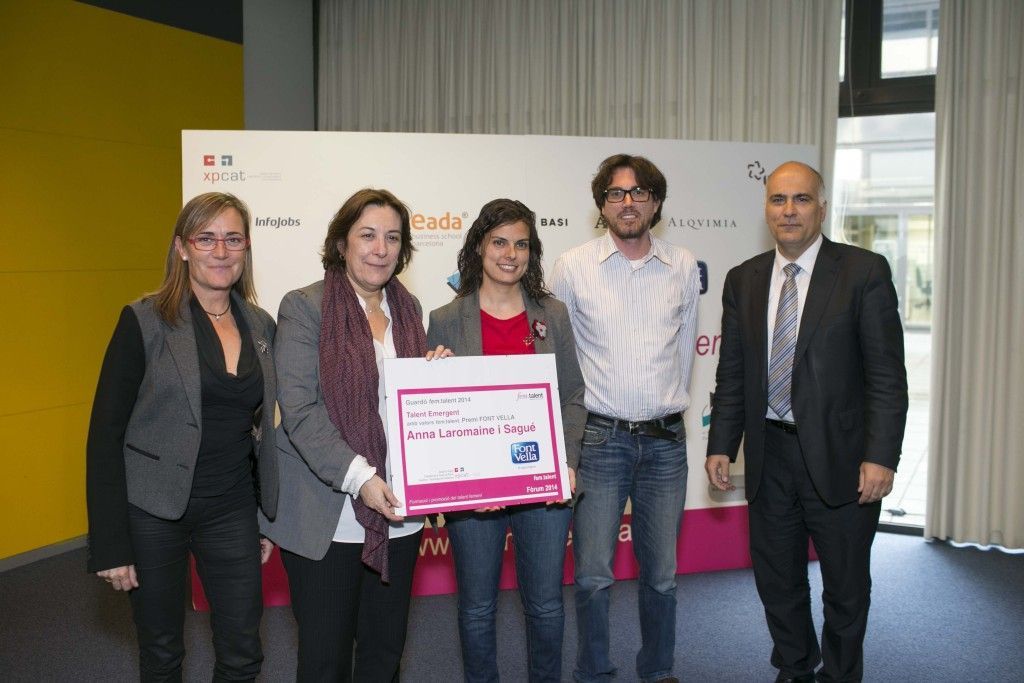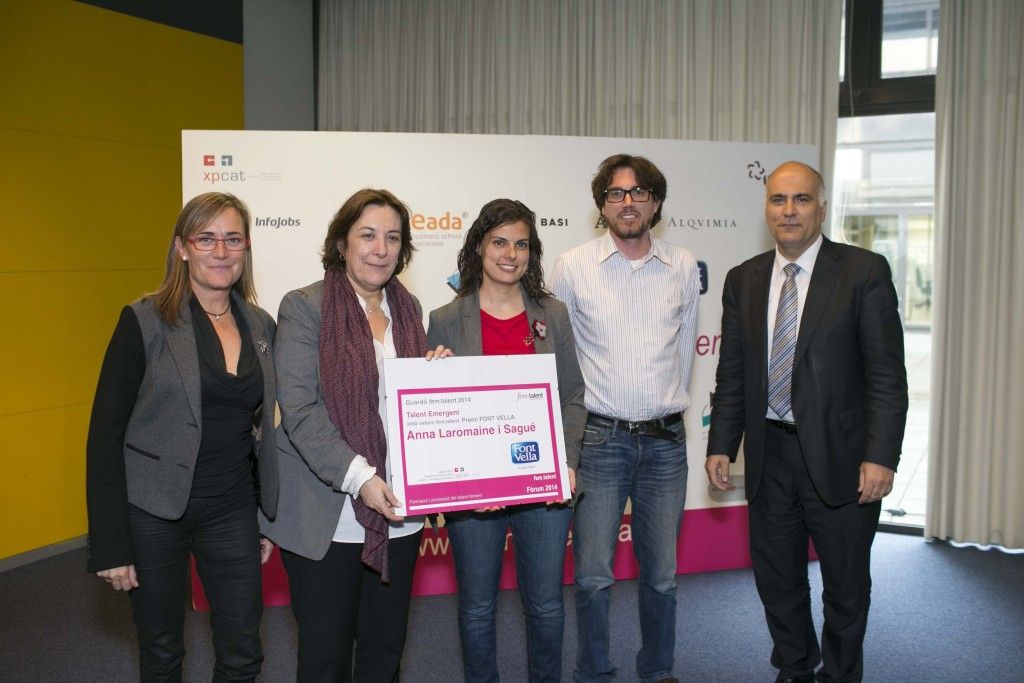Hot off the press: new article in Journal of Polymer Science
- A novel solventless coating method to graft low molecular weight polyethyleneimine on silica
- fine powders
- Nerea Murillo-Cremaes, Pedro López-Aranguren, Lourdes F. Vega, Javier Saurina,
- Anna Roig*, Concepción Domingo*
- Journal of Polymer Science, Part A: Polymer Chemistry (2014), on-line July DOI:10.1002/pola.27297
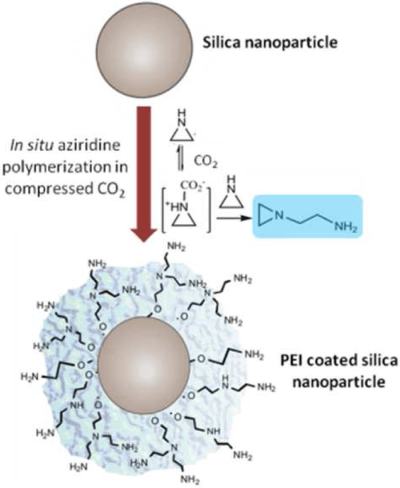 A ring-opening polymerization process catalyzed by compressed CO2 at low pressure and temperature and in the absence of any organic solvent is presented. Fabrication of hybrid materials involving two types of silica nanoparticles (one of them with a magnetic core) coated with hyperbranched polyethyleneimine of low molecular weight was succesfully achieved. Properties of the obtained materials are identified as excellent for some biomedical applications
A ring-opening polymerization process catalyzed by compressed CO2 at low pressure and temperature and in the absence of any organic solvent is presented. Fabrication of hybrid materials involving two types of silica nanoparticles (one of them with a magnetic core) coated with hyperbranched polyethyleneimine of low molecular weight was succesfully achieved. Properties of the obtained materials are identified as excellent for some biomedical applications

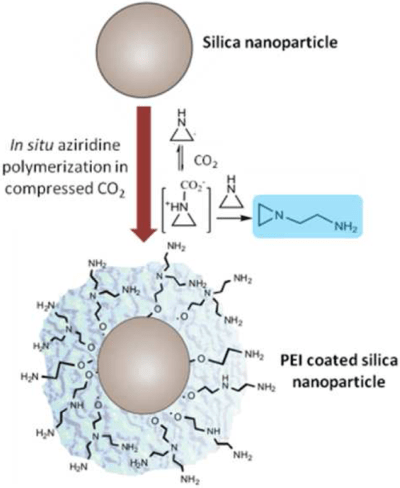

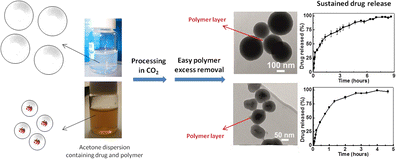
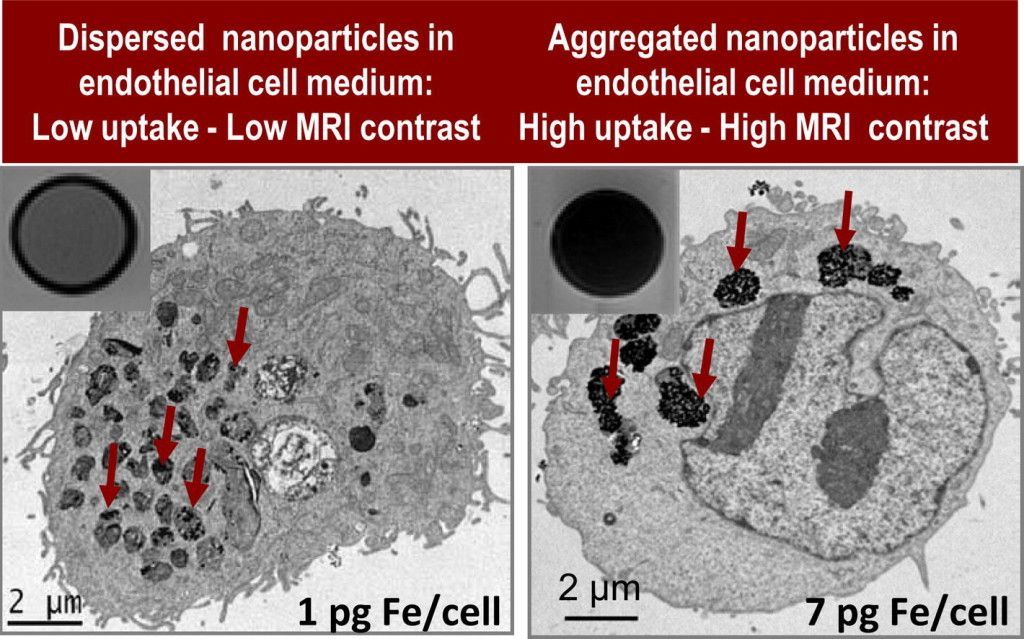



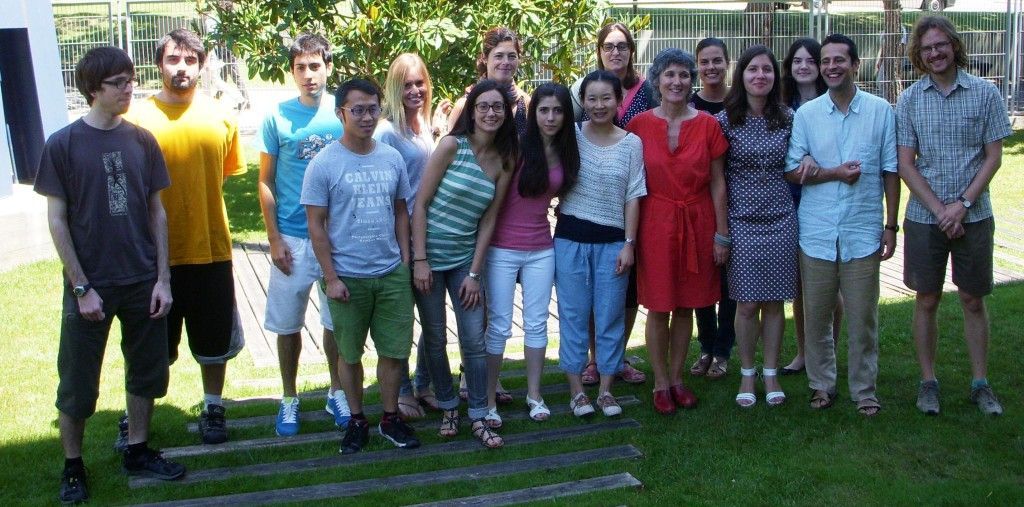
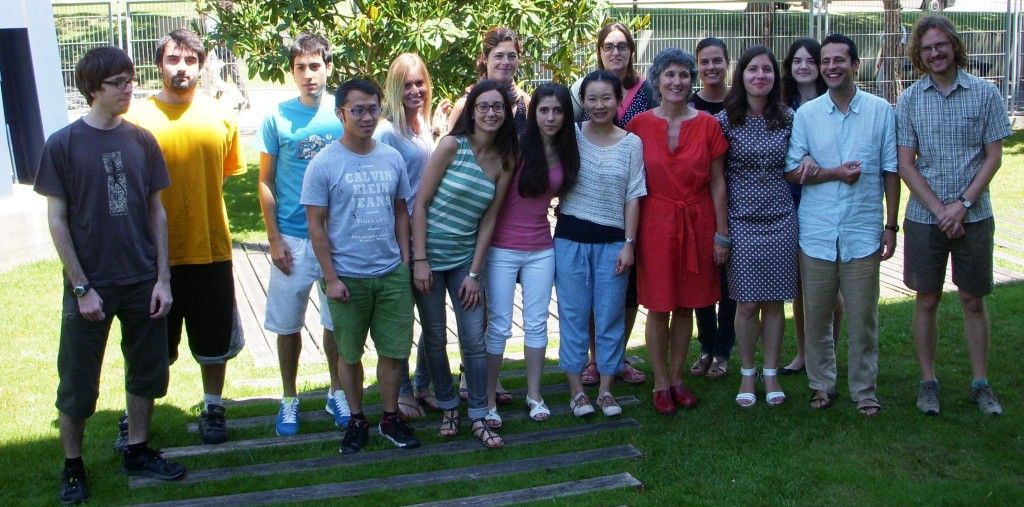

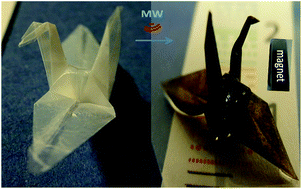
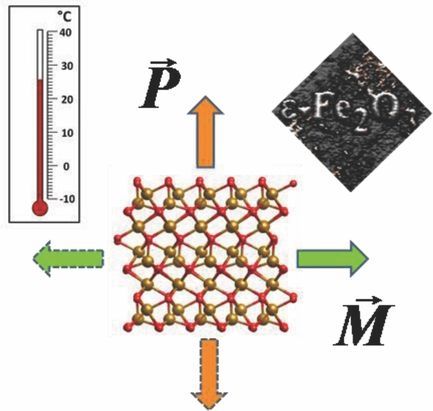
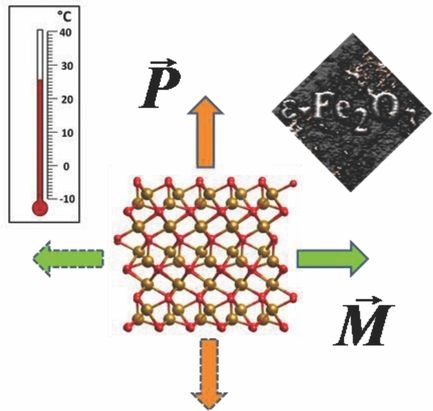
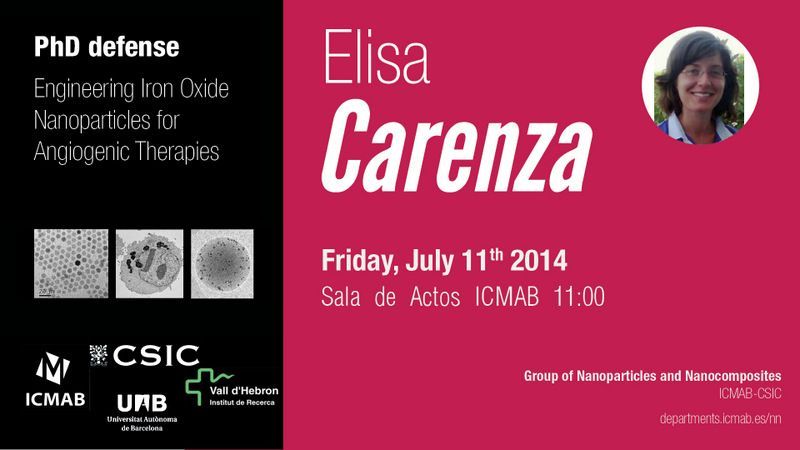
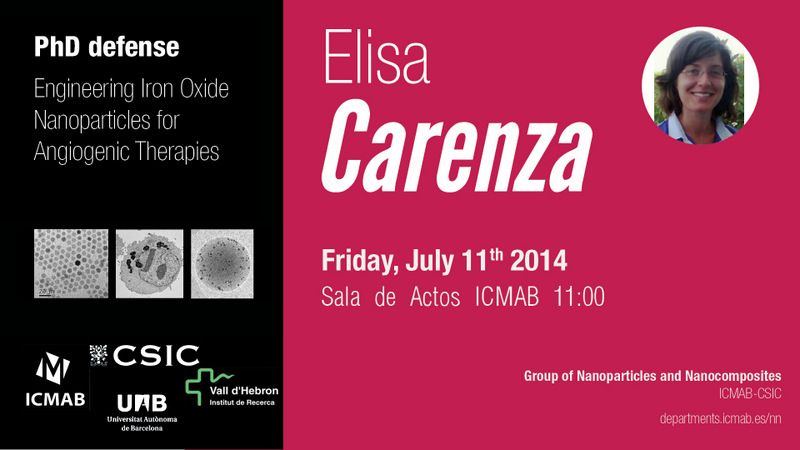
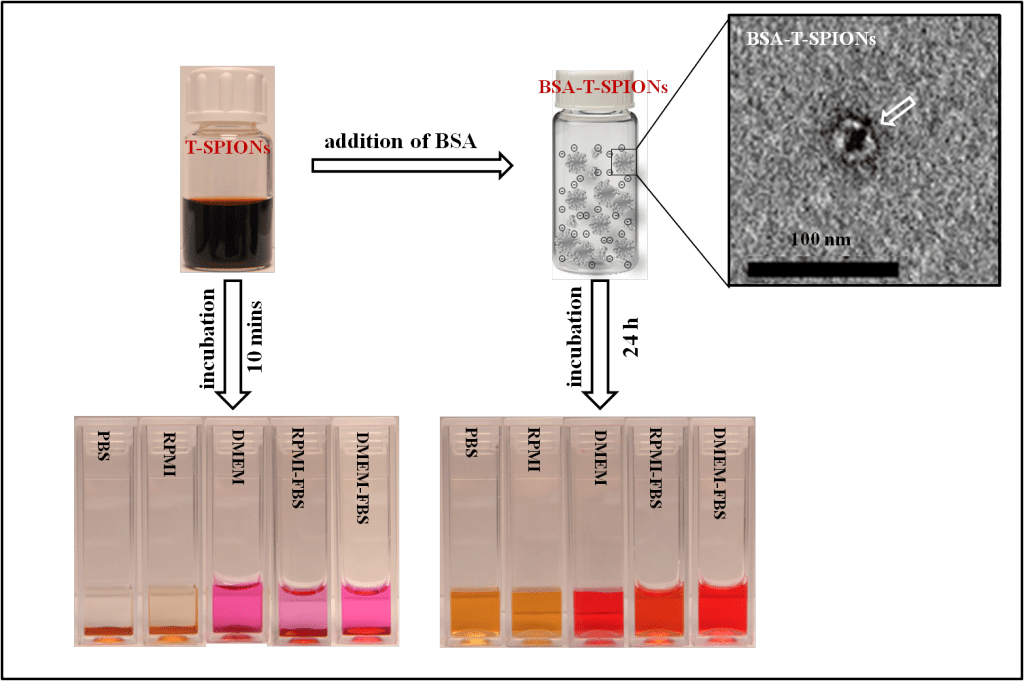
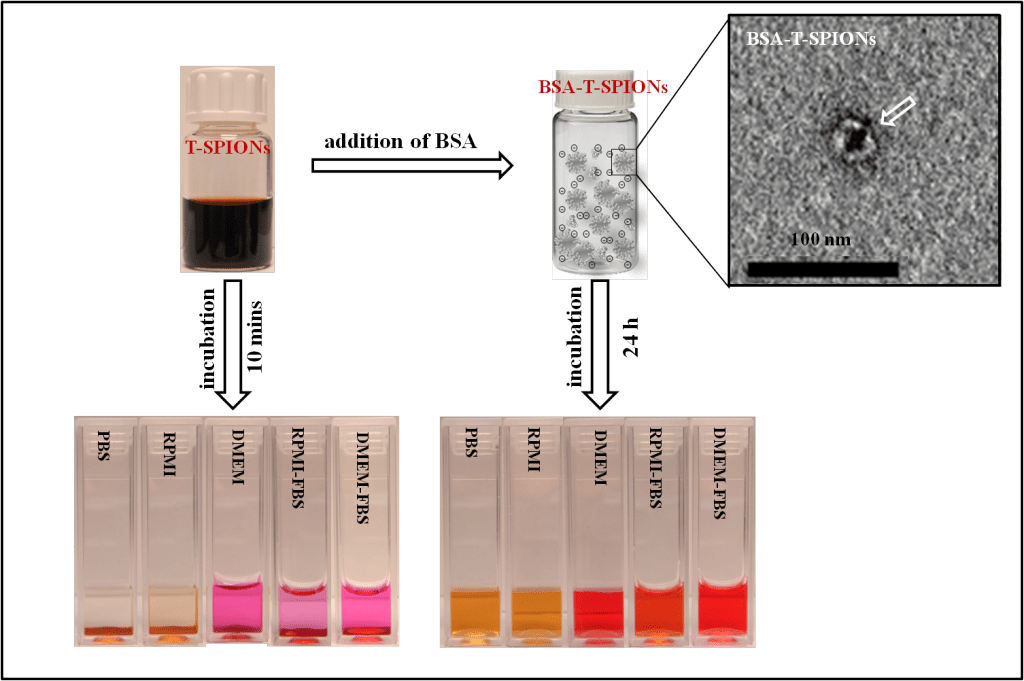 Enhanced stability of superparamagnetic iron oxide nanoparticles in biological media using a pH adjusted-BSA adsorption protocol
Enhanced stability of superparamagnetic iron oxide nanoparticles in biological media using a pH adjusted-BSA adsorption protocol